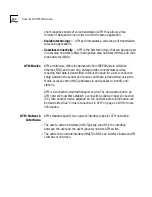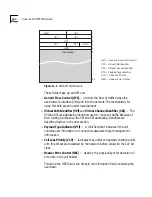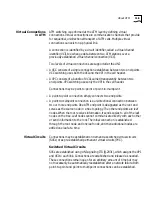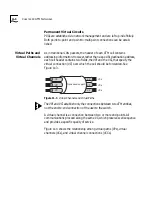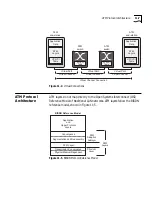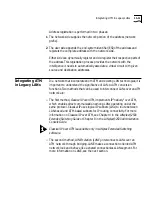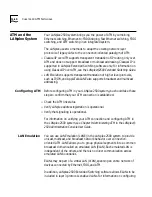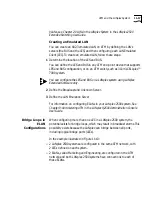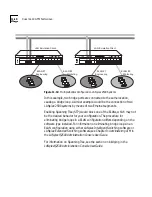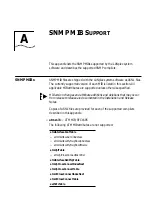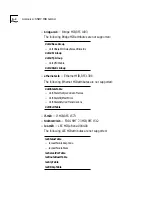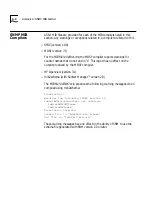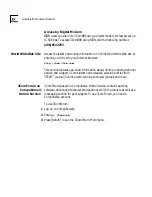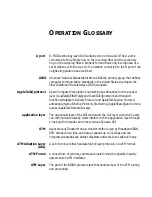
LAN Emulation (LANE)
11-13
Figure 11-8
LAN Emulation Sublayer
In a traditional IEEE 802.x LAN, traffic is transmitted to all stations on the
shared physical medium, with each station determining which packets it
should receive and which packets should be discarded.
In an ATM network, each LAN segment can be emulated using the
client/server model by allowing a selected group of ATM nodes (clients) to
join a LAN emulation service (server). Each LAN is composed of all nodes
that have joined a particular LAN emulation service. An end system is
configured as a member of a single LAN emulation service, while an
intermediate system, such as a router, belongs to multiple LAN emulation
services and provides connectivity between each of the emulated LANs.
Figure 11-9 shows an ATM network is composed of three separate ATM LAN
segments: A, B, and C. Each of a particular LAN segment’s members is a
member of the same LAN emulation service.
Physical Layer
ATM Layer
ATM Adaptation Layer
LAN
Emulation
Sublayer
IEEE 802.2 LLC
Summary of Contents for LANPLEX 2500
Page 1: ...LANPLEX 2500 OPERATION GUIDE Part No 801 00344 000 Published November 1996 Revision 03...
Page 14: ......
Page 18: ...1 4 CHAPTER 1 LANPLEX MANAGEMENT AND ADMINISTRATION OVERVIEW...
Page 78: ...III Chapter 9 FDDI Overview and Implementation Chapter 10 FDDI Networks FDDI TECHNOLOGY...
Page 97: ...IV Chapter 11 ATM Networks ATM TECHNOLOGY...
Page 116: ...V Appendix A SNMP MIB Support Appendix B Technical Support APPENDIXES...




